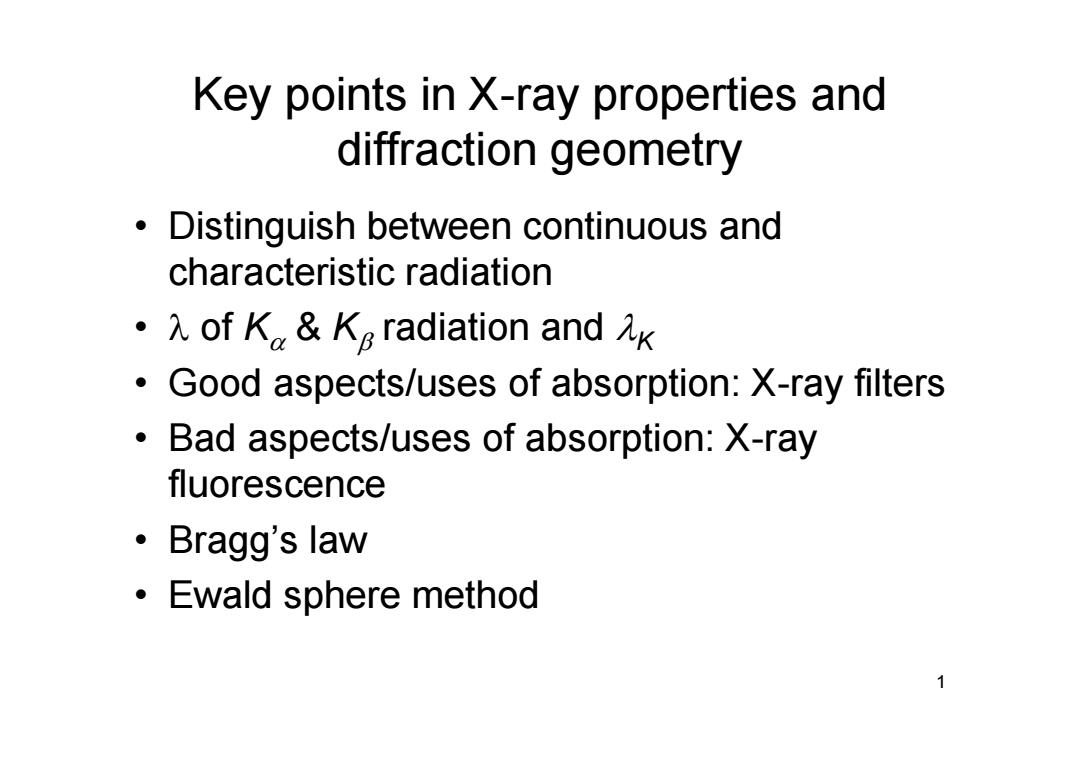
Key points in X-ray properties and diffraction geometry Distinguish between continuous and characteristic radiation .of K&Ke radiation and ik Good aspects/uses of absorption:X-ray filters Bad aspects/uses of absorption:X-ray fluorescence ·Bragg'slaW ·Ewald sphere method 1
Key points in X-ray properties and diffraction geometry • Distinguish between continuous and characteristic radiation • of K & K radiation and K • Good aspects/uses of absorption: X-ray filters • Bad aspects/uses of absorption: X-ray fluorescence • Bragg’s law • Ewald sphere method 1
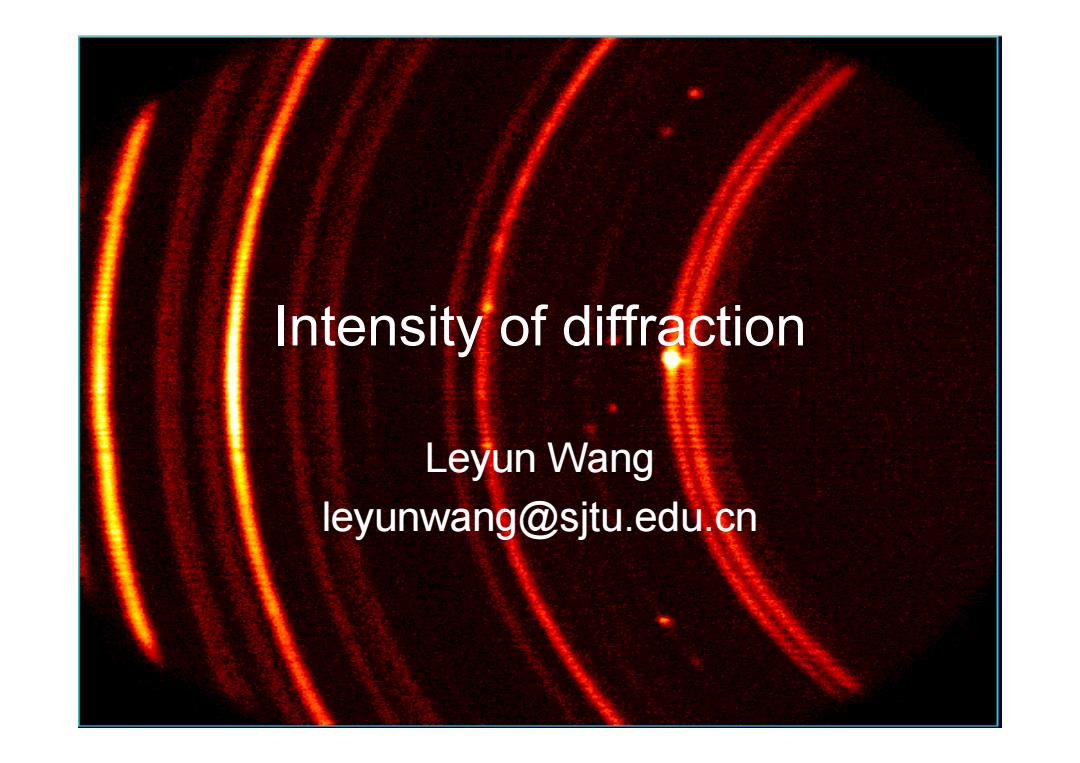
Intensity of diffraction Leyun Wang eyunwang@sjtu.edu.cn
Intensity of diffraction Leyun Wang leyunwang@sjtu.edu.cn 2
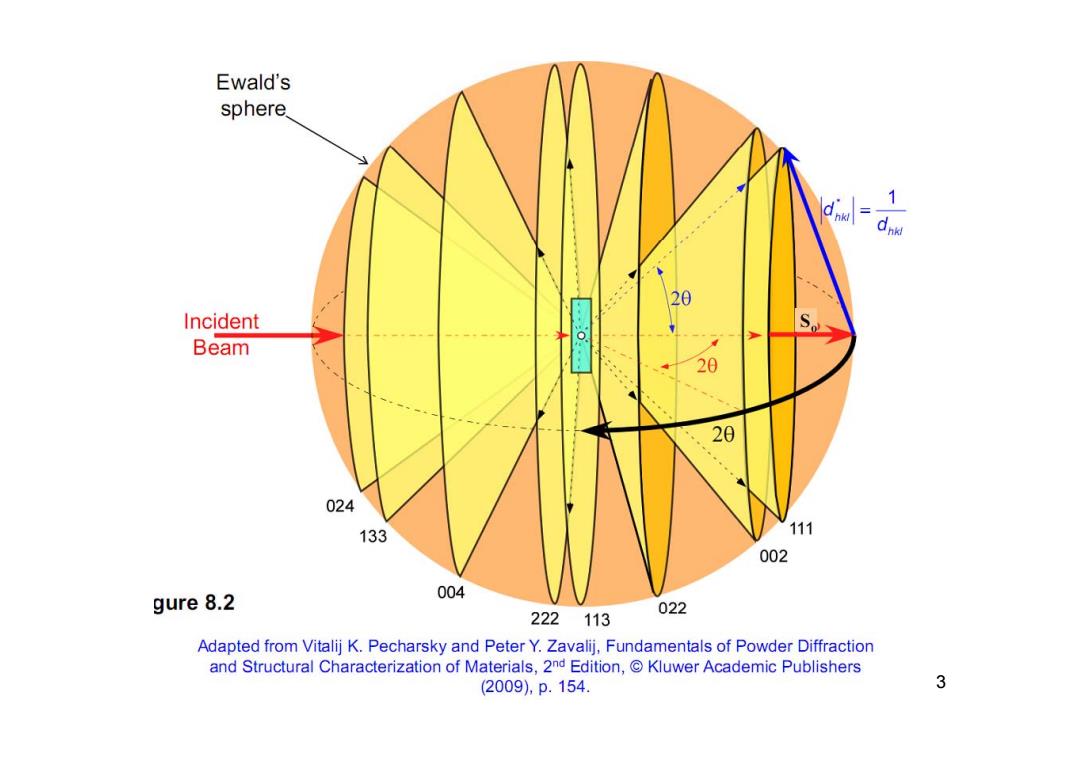
Ewald's sphere. 20 Incident Beam 20 20 024 133 111 002 gure 8.2 004 222113 022 Adapted from Vitalij K.Pecharsky and Peter Y.Zavalij,Fundamentals of Powder Diffraction and Structural Characterization of Materials,2nd Edition,Kluwer Academic Publishers (2009),p.154. 3
3

Types of diffraction X-ray:scattered by electron Electron:scattered by electrostatic potential Neutron:scattered by nuclei Diffraction pattern of X-ray Diffraction pattern of electron beam passing through Al foil beam passing through Al foil
Types of diffraction • X-ray: scattered by electron • Electron: scattered by electrostatic potential • Neutron: scattered by nuclei 4
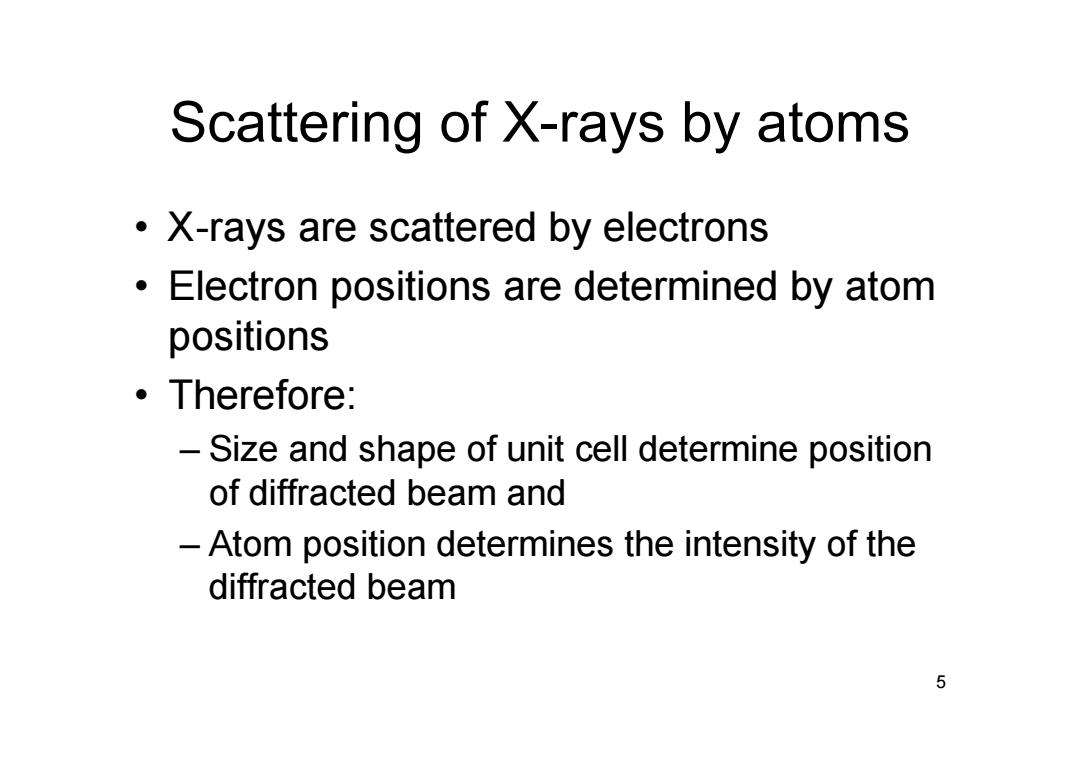
Scattering of X-rays by atoms X-rays are scattered by electrons Electron positions are determined by atom positions 。Therefore: Size and shape of unit cell determine position of diffracted beam and Atom position determines the intensity of the diffracted beam 5
Scattering of X-rays by atoms • X-rays are scattered by electrons • Electron positions are determined by atom positions • Therefore: – Size and shape of unit cell determine position of diffracted beam and – Atom position determines the intensity of the diffracted beam 5
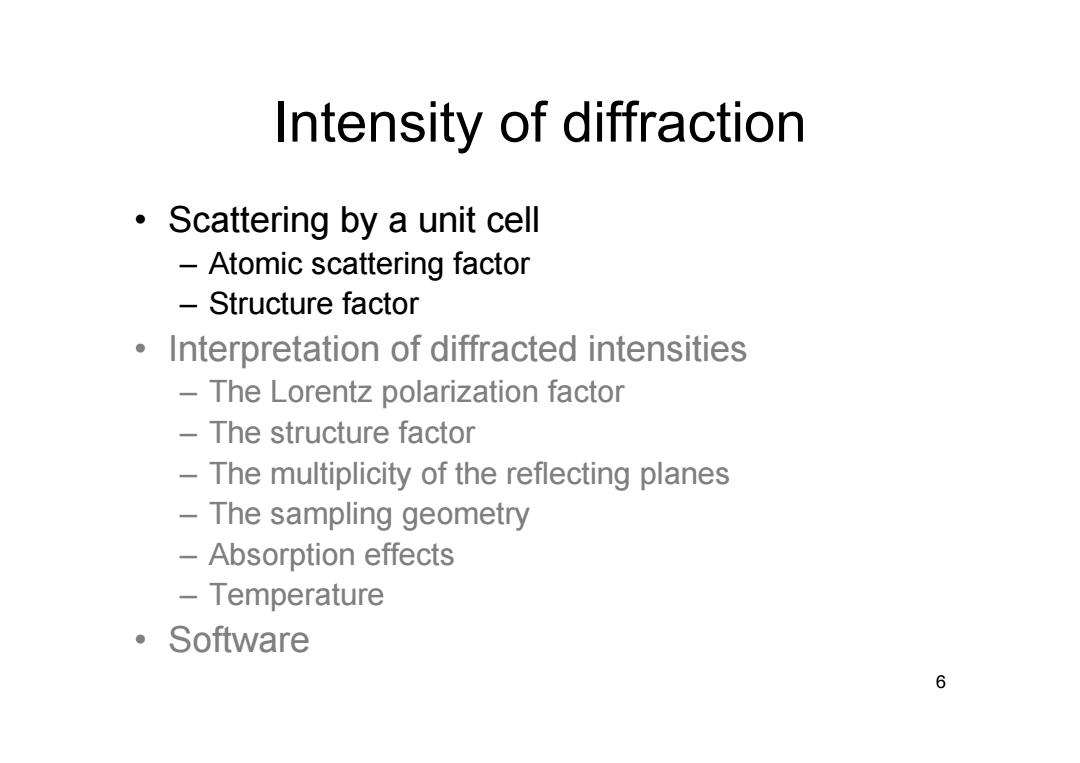
Intensity of diffraction • Scattering by a unit cell Atomic scattering factor Structure factor Interpretation of diffracted intensities The Lorentz polarization factor The structure factor The multiplicity of the reflecting planes The sampling geometry Absorption effects -Temperature ●Software 6
Intensity of diffraction • Scattering by a unit cell – Atomic scattering factor – Structure factor • Interpretation of diffracted intensities – The Lorentz polarization factor – The structure factor – The multiplicity of the reflecting planes – The sampling geometry – Absorption effects – Temperature • Software 6
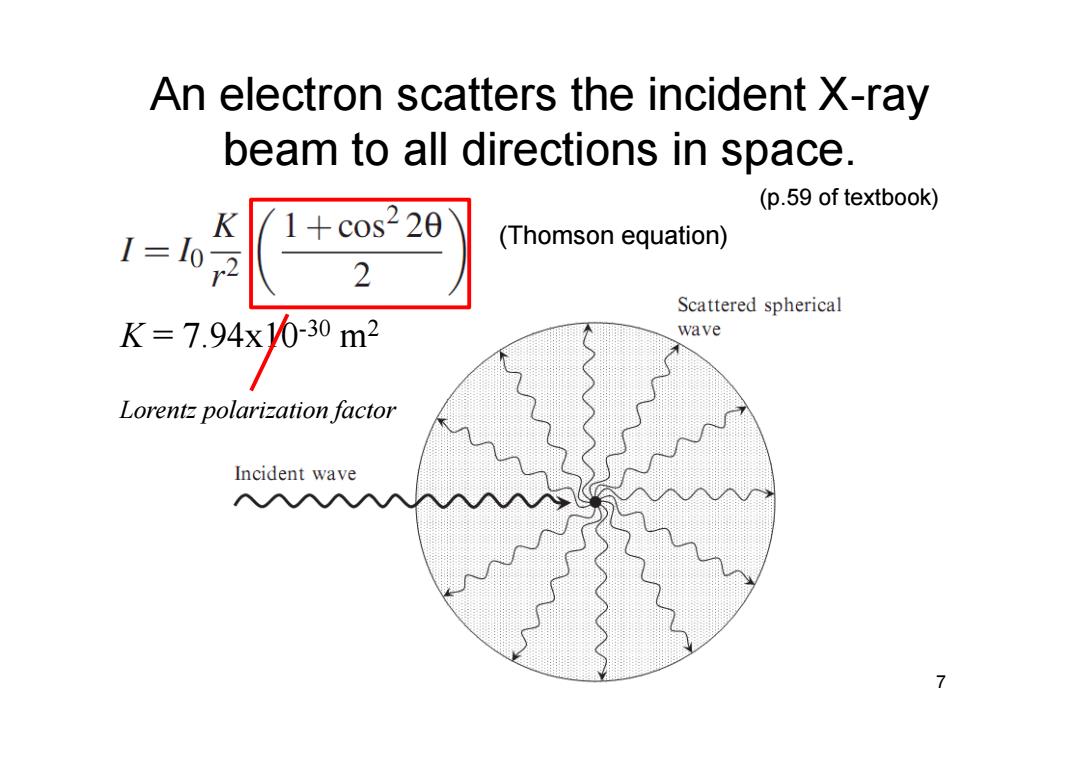
An electron scatters the incident X-ray beam to all directions in space. (p.59 of textbook) (Thomson equation) 2 Scattered spherical K=7.94x0-30m2 wave Lorentz polarization factor Incident wave 7
An electron scatters the incident X-ray beam to all directions in space. 7 K = 7.94x10-30 m 2 (Thomson equation) Lorentz polarization factor (p.59 of textbook)
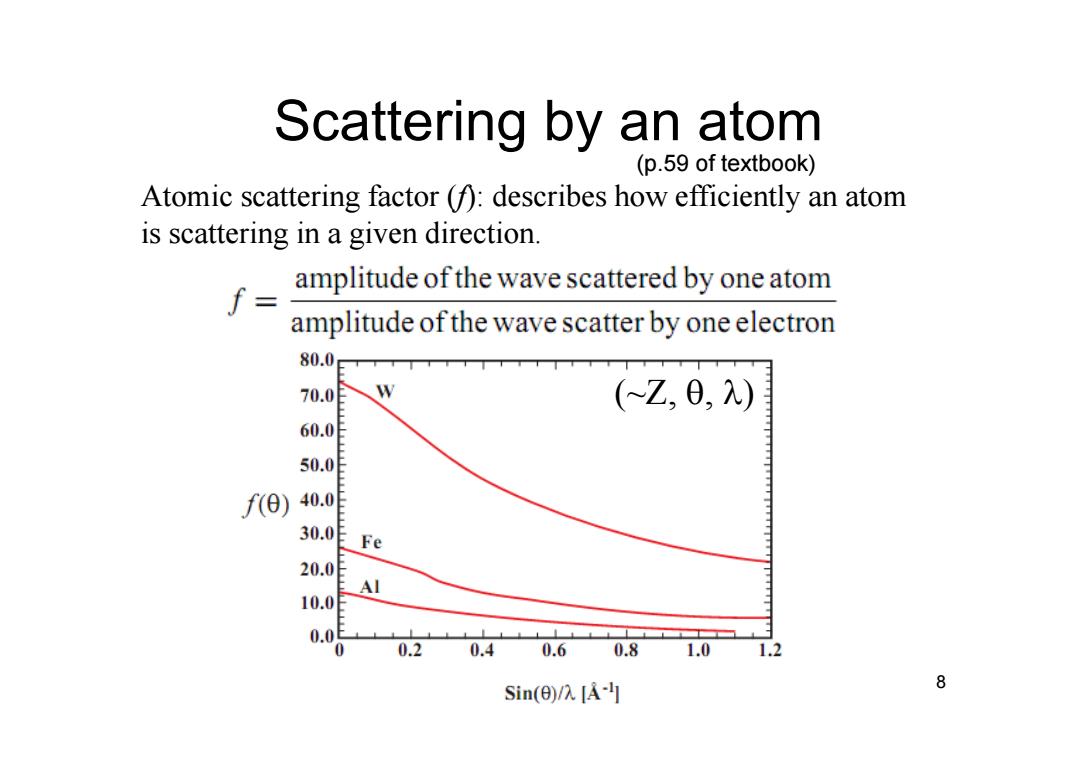
Scattering by an atom (p.59 of textbook) Atomic scattering factor ()describes how efficiently an atom is scattering in a given direction. I= amplitude of the wave scattered by one atom amplitude of the wave scatter by one electron 80.0 70.0E (Z,0,) 60.0E 50.0f f0) 40.0F 30.0f Fe 20.0 Al 10.0 0.0 0.2 0.4 0.6 0.8 1.0 1.2 Sin()/A-] 8
8 Scattering by an atom Atomic scattering factor (f): describes how efficiently an atom is scattering in a given direction. (p.59 of textbook) (~Z, , )
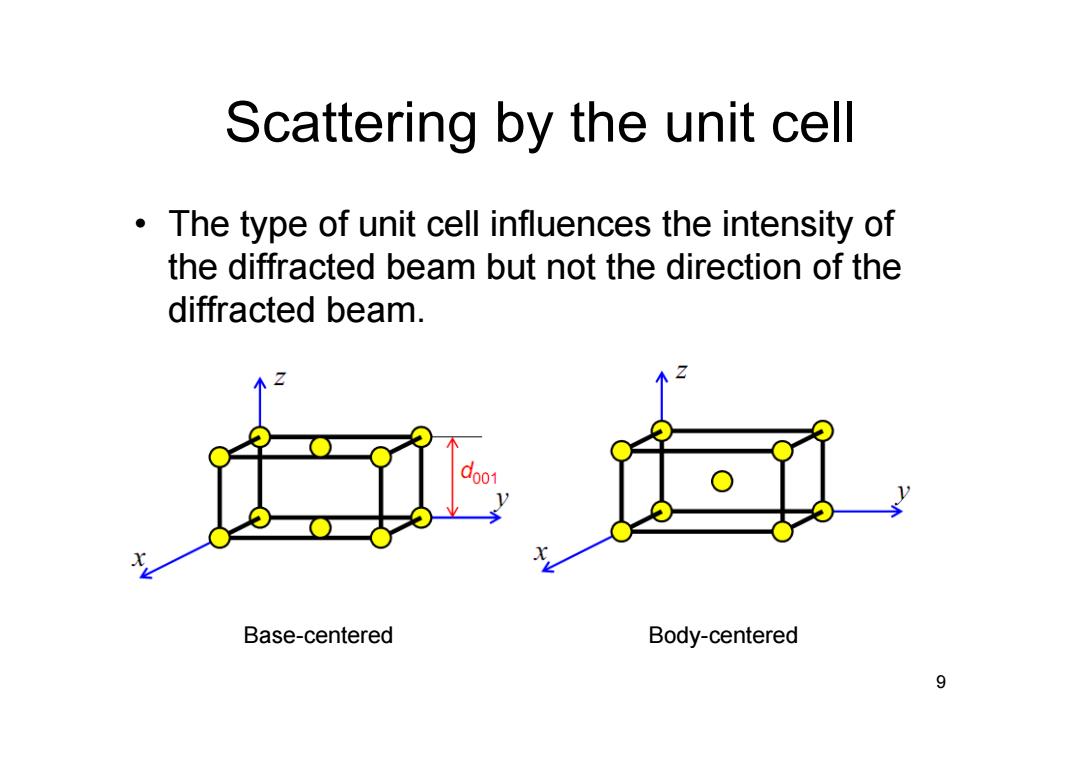
Scattering by the unit cell The type of unit cell influences the intensity of the diffracted beam but not the direction of the diffracted beam. Base-centered Body-centered 9
Scattering by the unit cell • The type of unit cell influences the intensity of the diffracted beam but not the direction of the diffracted beam. 9 Base-centered Body-centered

doo1 B Diffracted waves from the(001)and(002)crystal planes are 180 out of phase and will cancel each other out for body-centered cell. 10
10 Diffracted waves from the (001) and (002) crystal planes are 18 0 o out of phase and will cancel each other out for body-centered cell